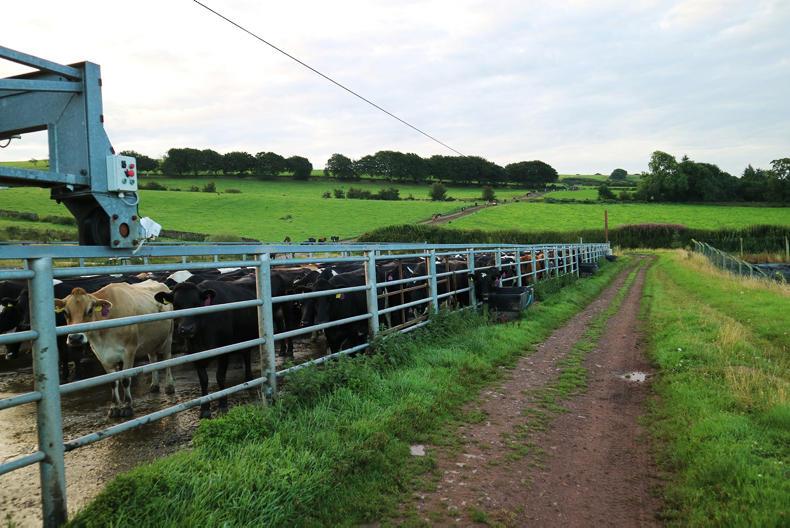We finished serving on 8 August. We use AI right through, using beef straws at the latter stages. Bulls are expensive to buy and maintain, get lame on a grass paddock, break fences, etc.
The last three weeks of AI produced about 3.5 repeats per day, or 8.5%, so we are hoping that at least a chunk of these will hold. This is a good improvement on previous years, as we would be seeing a lot more repeats at this stage.
It is a credit to our team that this has happened. All the things they do, such as condition scoring in the autumn, drying off cows at the right time, picking up dirty cows during calving, maintaining a low lameness rate and good heat detection, contribute to this success. We can’t be certain, of course, until the scanning happens in September, but things are looking positive.
We got the last cut of silage in the pit last week. We took a chance with the weather, but were lucky and mowed on Monday afternoon, picking up on Tuesday.
Our contractors, Drew and John Watson and Co, really pulled out the stops and sent in two self-propelled choppers and cleared some 190 acres in eight hours. They returned the next morning to help us sheet the pit. A good team makes the job really easy, and there is nothing as satisfying as throwing on the last tyres and seeing rain running over the cover a few hours later.
We now have a great stack of silage, which should see 650 cows through the winter. The remaining 130 cows will go into B&B. The in-calf heifers return to us at point of calving and, once calved, go straight to grass. Therefore, we don’t need any winter accommodation.
Our Johne’s control programme seems to be two steps forward and one back. Johne’s numbers dropped well on the first milk recording of the year, but increased on the second recording. More worryingly, a chunk of these new ones were in the first-calving heifers.
I think we slipped up slightly with the calf feeding in this batch: we relaxed a few protocols in the parlour thinking that we could pool the transition milk from the “known Johne’s-free cows”.
This was a bad mistake, because we have found in recent years that although you can be certain that Johne’s-positive cows are indeed positive, other positive cows can be missed depending on their antibody level.
To help prevent this, we now pasteurise low-risk transition milk. There is some debate about how effective it is against Johne’s, but having talked to other farmers who have brought this scourge under control, if it works for them, it will do us.
The protocols now in place for Johne’s control include calving all known Johne’s cows separately, removing calves from all cows 24/7; serving any Johne’s cows with beef semen; grazing young calves away from cows’ paddocks as much as possible; selective culling (ie Johne’s and one other issues), and pasteurising transition milk and tested colostrum.
Grass is growing well at 82kg/ha/day, though the cows were starting to go through it at an amazing speed for a week or so lately, when it got wet. Our rotation was starting to speed up to 17 days rather than the current, preferred 21 days, so we took some paddocks back in from what was meant to be cut for silage.
The milk did drop for a few days, but recovered and put us back on track at 22 days again, at minimal cost. Thankfully, these fields were well out of the sight of the public road as they looked a bit messy afterwards, and any grazing farmers nearby may have raised an eyebrow if they had been spotted.
Cows are yielding 15.7l at 5.02bf and 3.85 protein, therefore 1.39kgMS/day. They are being fed 1kg cake. This time last year, we were doing 13.9l (1.24MS/day) on 0.3kg meal/cow/day. We are trying this feeding of 1kg cake in the main grazing season for one year, though I am sceptical about it. All it seems to have done is produce more milk while driving up costs, probably due to the displacement of grass, eg we are probably getting more milk, but have just incurred the cost of making more silage.
This silage will also have to be fed out at some point: more cost. More diesel will be burned: more cost. Every time we add a step between grass growing in the paddock and the bulk milk tank it adds cost. This may well be justified, but each step at least deserves to be scrutinised. One thing I am sure of is that it takes a lot of milk to cover all this.






 This is a subscriber-only article
This is a subscriber-only article










SHARING OPTIONS: